5.10: Find My Strengths
- Page ID
- 14093
\( \newcommand{\vecs}[1]{\overset { \scriptstyle \rightharpoonup} {\mathbf{#1}} } \)
\( \newcommand{\vecd}[1]{\overset{-\!-\!\rightharpoonup}{\vphantom{a}\smash {#1}}} \)
\( \newcommand{\id}{\mathrm{id}}\) \( \newcommand{\Span}{\mathrm{span}}\)
( \newcommand{\kernel}{\mathrm{null}\,}\) \( \newcommand{\range}{\mathrm{range}\,}\)
\( \newcommand{\RealPart}{\mathrm{Re}}\) \( \newcommand{\ImaginaryPart}{\mathrm{Im}}\)
\( \newcommand{\Argument}{\mathrm{Arg}}\) \( \newcommand{\norm}[1]{\| #1 \|}\)
\( \newcommand{\inner}[2]{\langle #1, #2 \rangle}\)
\( \newcommand{\Span}{\mathrm{span}}\)
\( \newcommand{\id}{\mathrm{id}}\)
\( \newcommand{\Span}{\mathrm{span}}\)
\( \newcommand{\kernel}{\mathrm{null}\,}\)
\( \newcommand{\range}{\mathrm{range}\,}\)
\( \newcommand{\RealPart}{\mathrm{Re}}\)
\( \newcommand{\ImaginaryPart}{\mathrm{Im}}\)
\( \newcommand{\Argument}{\mathrm{Arg}}\)
\( \newcommand{\norm}[1]{\| #1 \|}\)
\( \newcommand{\inner}[2]{\langle #1, #2 \rangle}\)
\( \newcommand{\Span}{\mathrm{span}}\) \( \newcommand{\AA}{\unicode[.8,0]{x212B}}\)
\( \newcommand{\vectorA}[1]{\vec{#1}} % arrow\)
\( \newcommand{\vectorAt}[1]{\vec{\text{#1}}} % arrow\)
\( \newcommand{\vectorB}[1]{\overset { \scriptstyle \rightharpoonup} {\mathbf{#1}} } \)
\( \newcommand{\vectorC}[1]{\textbf{#1}} \)
\( \newcommand{\vectorD}[1]{\overrightarrow{#1}} \)
\( \newcommand{\vectorDt}[1]{\overrightarrow{\text{#1}}} \)
\( \newcommand{\vectE}[1]{\overset{-\!-\!\rightharpoonup}{\vphantom{a}\smash{\mathbf {#1}}}} \)
\( \newcommand{\vecs}[1]{\overset { \scriptstyle \rightharpoonup} {\mathbf{#1}} } \)
\( \newcommand{\vecd}[1]{\overset{-\!-\!\rightharpoonup}{\vphantom{a}\smash {#1}}} \)
\(\newcommand{\avec}{\mathbf a}\) \(\newcommand{\bvec}{\mathbf b}\) \(\newcommand{\cvec}{\mathbf c}\) \(\newcommand{\dvec}{\mathbf d}\) \(\newcommand{\dtil}{\widetilde{\mathbf d}}\) \(\newcommand{\evec}{\mathbf e}\) \(\newcommand{\fvec}{\mathbf f}\) \(\newcommand{\nvec}{\mathbf n}\) \(\newcommand{\pvec}{\mathbf p}\) \(\newcommand{\qvec}{\mathbf q}\) \(\newcommand{\svec}{\mathbf s}\) \(\newcommand{\tvec}{\mathbf t}\) \(\newcommand{\uvec}{\mathbf u}\) \(\newcommand{\vvec}{\mathbf v}\) \(\newcommand{\wvec}{\mathbf w}\) \(\newcommand{\xvec}{\mathbf x}\) \(\newcommand{\yvec}{\mathbf y}\) \(\newcommand{\zvec}{\mathbf z}\) \(\newcommand{\rvec}{\mathbf r}\) \(\newcommand{\mvec}{\mathbf m}\) \(\newcommand{\zerovec}{\mathbf 0}\) \(\newcommand{\onevec}{\mathbf 1}\) \(\newcommand{\real}{\mathbb R}\) \(\newcommand{\twovec}[2]{\left[\begin{array}{r}#1 \\ #2 \end{array}\right]}\) \(\newcommand{\ctwovec}[2]{\left[\begin{array}{c}#1 \\ #2 \end{array}\right]}\) \(\newcommand{\threevec}[3]{\left[\begin{array}{r}#1 \\ #2 \\ #3 \end{array}\right]}\) \(\newcommand{\cthreevec}[3]{\left[\begin{array}{c}#1 \\ #2 \\ #3 \end{array}\right]}\) \(\newcommand{\fourvec}[4]{\left[\begin{array}{r}#1 \\ #2 \\ #3 \\ #4 \end{array}\right]}\) \(\newcommand{\cfourvec}[4]{\left[\begin{array}{c}#1 \\ #2 \\ #3 \\ #4 \end{array}\right]}\) \(\newcommand{\fivevec}[5]{\left[\begin{array}{r}#1 \\ #2 \\ #3 \\ #4 \\ #5 \\ \end{array}\right]}\) \(\newcommand{\cfivevec}[5]{\left[\begin{array}{c}#1 \\ #2 \\ #3 \\ #4 \\ #5 \\ \end{array}\right]}\) \(\newcommand{\mattwo}[4]{\left[\begin{array}{rr}#1 \amp #2 \\ #3 \amp #4 \\ \end{array}\right]}\) \(\newcommand{\laspan}[1]{\text{Span}\{#1\}}\) \(\newcommand{\bcal}{\cal B}\) \(\newcommand{\ccal}{\cal C}\) \(\newcommand{\scal}{\cal S}\) \(\newcommand{\wcal}{\cal W}\) \(\newcommand{\ecal}{\cal E}\) \(\newcommand{\coords}[2]{\left\{#1\right\}_{#2}}\) \(\newcommand{\gray}[1]{\color{gray}{#1}}\) \(\newcommand{\lgray}[1]{\color{lightgray}{#1}}\) \(\newcommand{\rank}{\operatorname{rank}}\) \(\newcommand{\row}{\text{Row}}\) \(\newcommand{\col}{\text{Col}}\) \(\renewcommand{\row}{\text{Row}}\) \(\newcommand{\nul}{\text{Nul}}\) \(\newcommand{\var}{\text{Var}}\) \(\newcommand{\corr}{\text{corr}}\) \(\newcommand{\len}[1]{\left|#1\right|}\) \(\newcommand{\bbar}{\overline{\bvec}}\) \(\newcommand{\bhat}{\widehat{\bvec}}\) \(\newcommand{\bperp}{\bvec^\perp}\) \(\newcommand{\xhat}{\widehat{\xvec}}\) \(\newcommand{\vhat}{\widehat{\vvec}}\) \(\newcommand{\uhat}{\widehat{\uvec}}\) \(\newcommand{\what}{\widehat{\wvec}}\) \(\newcommand{\Sighat}{\widehat{\Sigma}}\) \(\newcommand{\lt}{<}\) \(\newcommand{\gt}{>}\) \(\newcommand{\amp}{&}\) \(\definecolor{fillinmathshade}{gray}{0.9}\)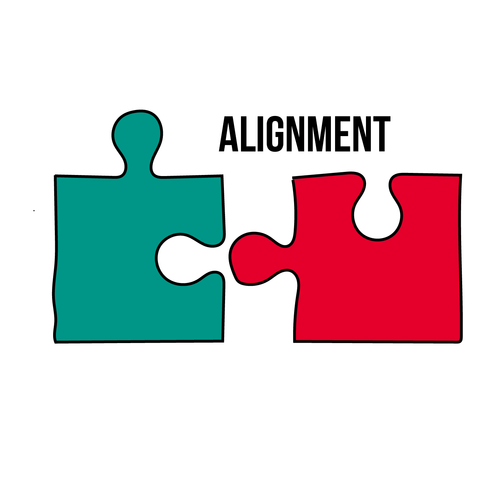
National Health Education Standards (NHES)
- 1.12.7 Compare and Contrast the benefits and barriers to practicing a variety of healthy behaviors, such as building and maintaining healthy self-esteem.
- 7.12.2 Demonstrate a variety of healthy practices and behaviors, such as building and maintaining healthy self-esteem, that will maintain or improve the health of self and others. [Example] 1.12.2 Describe the interrelationships of emotional, intellectual, physical, and social health when under stress.
Wellness Guidelines
- Decrease negative perception of challenges.
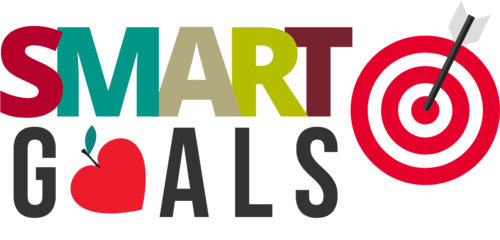
- Instruction: In a group or think-pair-share format, have participants discuss the following questions. Acknowledge those who have progressed towards their goal(s) and encourage anyone who wants to change or modify their goal to get 1:1 support.
- Share: Let’s discuss our SMART Goals.
- How is it going with your current SMART goal?
- What are some ways you can improve progress towards your goal? (Grows)
- What are some ways you are doing well with progress towards your goal? (Glows)
GUIDELINE: Decrease Negative Perception of Challenges
- Share: What guideline do you think is related to today’s lesson? Who has a SMART Goal related to this guideline?
- Instruction: Select one activity.
- Guideline Popcorn: The group lists all 8 guidelines rapidly in popcorn format.
- Guideline Charades: Divide participants into groups and assign each a guideline. Each group has to silently act out the guideline for the rest to guess.
- Two Truths and One Lie:
- Truth 1: Challenges make us stronger, more resilient.
- Truth 2: Challenges happen throughout our lives at every age.
- Lie: People with high self-esteem are always successful.
- Questions to discuss and/or journal:
- What are some of the biggest challenges you have faced?
- Do you enjoy overcoming challenges, or do you prefer things to be easy? Why?
- Do you think that the challenges you have faced over your life have made you a stronger person?
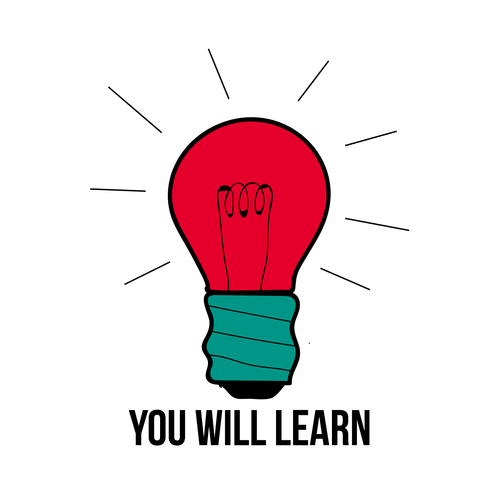
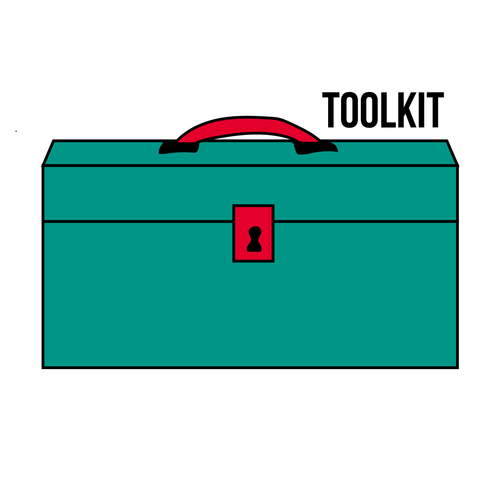
- Worksheets
- Slide presentation
- Looking Glass Self Handout
- Paper (cut-out sails)
- Markers

[As defined Merriam-Webster, n.d.]
- Strength: Ability to provide consistent, near-perfect performance in a given activity.
- Talent: Naturally recurring patterns of thought, feeling, or behavior that can be productively applied.
- Knowledge: Information, understanding or skill that you get from experience or education.
- Skill: The ability to do something that comes from training, experience or practice.
- Investment: The act of giving your time or effort in order to accomplish something or make something better.
- Self-esteem: A feeling of having respect for yourself and your abilities.
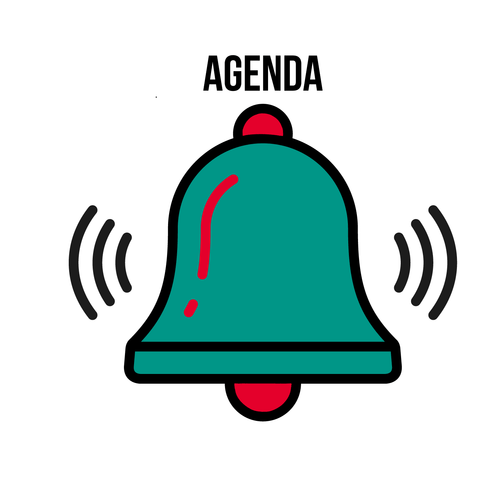
- Do Now
- Shine Bright Like a Diamond
- Looking Glass Self
- Cast Your Strengths
- Exit Ticket
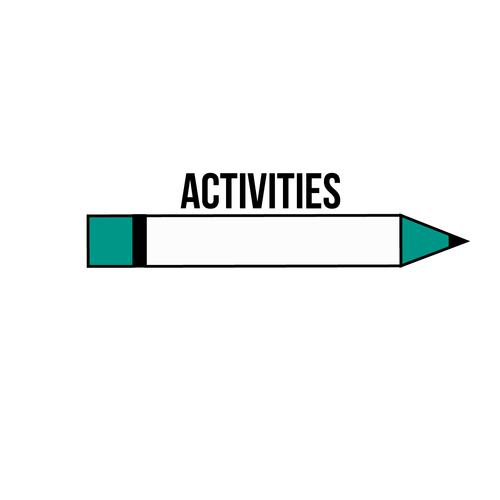
Do Now:
- Instruction:
- Have participants answer the following question(s) on their worksheet or by sharing out loud.
- What is something that you are good at?
- What is something you like to learn about?
- What is something you like to spend time on?
- Have participants answer the following question(s) on their worksheet or by sharing out loud.
Good to Know: Shine Bright Like a Diamond
- Share:
- Everyone has strengths, but sometimes they are untapped or unrecognized.
- Whether it is making others laugh, cooking or drawing, we are all good at something.
- Strength is the ability to provide consistent, near-perfect performance in a given activity. Where do strengths come from?
- Just as finished diamonds start as diamonds in the rough, strengths begin with talents.
- A talent is a naturally recurring pattern of thought, feeling, or behavior that can be productively applied.
- And just as rough diamonds are naturally found in the earth, talents are naturally found within you.
- But while diamonds are refined with blades and polishing wheels, strengths are produced when talents are refined with knowledge, skill, and
- Knowledge is the information, understanding or skill that you get from experience or education.
- Skill is the ability to do something that comes from training, experience or practice.
- Investment is the act of giving your time or effort in order to accomplish something or make something better.
- Therefore, Talent + Knowledge + Skills x Investment = Strengths
- Your greatest areas of talent are most likely the sources of your potential strengths.
- Each person naturally has a group of talents that can be developed into strengths when you learn about it and practice it. Each one of your strength configurations, therefore, is unique.
- Talents are like "diamonds in the rough," whereas strengths are like diamonds that show brilliance after they have been carefully cut and polished.
- For example:
- If you like talking to strangers and enjoy getting to know people, then that could be one of your talents. With knowledge, skill, and investment you could develop this talent into the strength of building a network who know you and can help you either personally or professionally.
- If you like persuading others of your opinion, that could be one of your talents that could perhaps be developed into the ability to sell a product successfully. However, in order to this well, you’ll need to learn about the product (knowledge), how to sell (skills) and practice (investment) [Clifton Strengths, n.d.].
Real World Relevance: Looking Glass Self
- Set-Up:
- Pass out the Looking Glass Self Handout.
- Instruction:
- Divide students up into think-pair-share groups. With a set time (suggest 5-8 min), have participants fill out the handout and discuss between their groups.
- Share:
- Let's learn more about ourselves and each other by understanding how we see ourselves and how we think others see us.
- This is called the “looking glass self” which is a theory that we all develop our identities through our interactions with others and our relationships [the University of Minnesota, n.d.].
- Share:
- What did you learn about your partner doing this activity? What did you learn about yourself?
Hands-On: Cast Your Strengths
- Set-up: Display a big sailboat on the board.
 Image from: www.clipartbay.com/clipart/200785
Image from: www.clipartbay.com/clipart/200785- Share:
- My strengths may not be your strengths and your strengths may not be my strengths. How and which talents you develop is your choice.
- Every single person is different, and everyone will respond to a challenge in their own way using these strengths. People can excel in one area but be weaker in another.
- But you must learn to recognize your strengths to be able to develop them.
- It is when we recognize our strengths that our self-esteem grows.
- Self-esteem is a feeling of having respect for yourself and your abilities.
- Recognizing your strengths is directly related to your self-esteem, and self-esteem is something that you do, not something that you have.
- When you have healthy self-esteem, you feel more balanced and confident. You can believe in yourself! Yet, you are also realistic and recognize that you have both strengths and your weaknesses.
- At different points of your life, your self-esteem can change.
- For example, a challenge you are struggling to overcome can take a hit on your self-esteem.
- Sometimes we think we can improve ourselves the most by tackling our insecurities and weaknesses, but consider this metaphor:
- Sometimes a sailboat has a little leak, and this is the weakness. It is important to pay attention to these weaknesses because you do not want your boat to sink. But even if you bail out the water or patch the hole, your actions will not propel your boat forward. For that, you need the sails. Focusing on weaknesses helps prevent you from failing, but success is found in the energy and forward momentum of strengths.
- Instruction:
- Hand out two (2) to three (3) cut-out sails to students and have them write what they think their current strengths are on the sails and place it on the sailboat on the board.
- Remind participants that strengths come from talents with skills, knowledge, and
- Display the following example strengths on the board:
- Creativity
- Curiosity
- Humor
- Spirituality
- Open-Mindedness
- Love of Learning
- Perspective
- Bravery
- Persistence
- Integrity
- Vitality
- Love
- Kindness
- Social Intelligence
- Citizenship
- Fairness
- Leadership
- Humility
- Forgiveness
- Self-Control
- Prudence
- Gratitude
- Appreciation of Beauty
- Hope
- Share:
- Was it hard to think of your strengths?
- How is knowing what we are good at going to help us in society?
- The response can include:
- Finding your strengths can help you be more productive, more engaged, more successful and accomplished.
- By knowing your strengths, you know best how you can help out others like your classmates, family, co-workers, neighbors, and And you also know how you are unable to as well.
- You develop strong and healthy habits rather than unhealthy ones such as cleaning your room, being positive and helping others out.
- Acknowledge, but don’t get stuck on your weaknesses.
- Take action on how to improve yourself [Trombone Player Wanted, n.d.].

Exit Ticket: Talent to Strength
- Instruction:
- Have participants write on their worksheet or share out loud the following question(s).
- What is one (1) talent that you’d like to develop into a strength in the future?
- How are you going to develop it? Think of the knowledge, skill, and investment that’s needed to develop it.
- Have participants write on their worksheet or share out loud the following question(s).
Bibliography
- Clifton Strengths. (n.d.). FAQ. Retrieved From: http://www.strengthsquest.com/help/g...l/default.aspx
- Merriam-Webster Learner’s Dictionary. (n.d). Aptitude. Retrieved From: http://www.learnersdictionary.com/definition/aptitude
- Merriam-Webster Learner’s Dictionary. (n.d.). Barrier. Retrieved From: http://www.learnersdictionary.com/definition/barrier
- Merriam-Webster Learner’s Dictionary. (n.d.). Benefit. Retrieved From: http://www.learnersdictionary.com/definition/benefit
- Merriam-Webster Learner’s Dictionary. (n.d). Invest. Retrieved From: http://www.learnersdictionary.com/definition/invest
- Merriam-Webster Learner’s Dictionary. (n.d.). Knowledge. Retrieved From: http://www.learnersdictionary.com/de...tion/knowledge
- Merriam-Webster Learner’s Dictionary. (n.d). Talent. Retrieved From: http://www.learnersdictionary.com/definition/talent
- Strengths Quest. (2006). What is the Difference Between a Talent and a Strength? Retrieved From: http://www.strengthsquest.com/help/g...-strength.aspx
- The Nemours Foundation. (2015). How can I improve my self-esteem? Retrieved From: http://kidshealth.org/teen/your_mind...elf_esteem.htm
- UC Davis Health. (n.d.). Self-esteem. Retrieved From: https://www.ucdmc.ucdavis.edu/hr/hrd...elf_esteem.pdf
- The University of Minnesota. (n.d.). Explaining Socialization. Retrieved From; http://open.lib.umn.edu/sociology/ch...socialization/

- (2013). Grit: the power of passion and perseverance - Angela Lee Duckworth. Retrieved From: https://www.youtube.com/watch?v=H14bBuluwB8
- Trombone Player Wanted. (n.d.) Retrieved from: https://www.youtube.com/watch?v=QfQdiVpcnGI
Optional Activity:
- Share:
- Let’s evaluate the benefits and barriers to self-esteem. Evaluate means to determine the significance or worth of something. The benefit is a good or helpful result or effect. The barrier is a problem that makes something difficult or impossible.
- Barriers:
- Perfectionist attitude
- Negative self-talk
- Outside influences (media, etc.)
- Challenges or adversities in your life [Nemours, 2015]
- Benefits:
- Positive thinking (feel good about yourself)
- Confidence and resilience
- Improvements in academic performance
- Healthier relationships
- Self-growth (learning from mistakes)
- Realistic expectations [Giunta et al., 2013]

